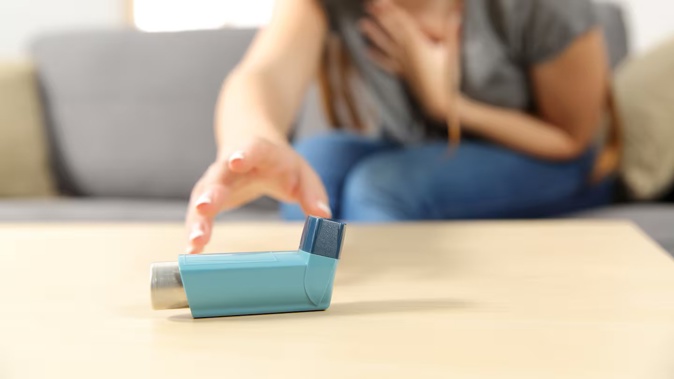

It took two calls from a desperate mother to emergency services and a 28-minute wait before paramedics arrived at the home of a teen who was suffering an asthma attack and deteriorating by the minute.
Tragically, the delay was fatal as, despite lengthy resuscitation efforts by both her family and the paramedics, the girl died on the floor at her home.
Now Deputy Health and Disability Commissioner Dr Vanessa Caldwell has condemned the actions of the ambulance call-handler who took the call from the teen’s mother on that regrettable evening in 2020.
In findings released today, Caldwell ruled he had incorrectly interpreted and entered critical details about the teen’s breathing into the triage categorisation software.
This meant the seriousness of the girl’s condition was not fully appreciated and affected the subsequent dispatch of an ambulance from a service not named in the decision.
According to the findings, the teen, who is also not named, had suffered from asthma, which she and her whānau had been managing for many years.
Her mother, referred to in the decision as Ms B, told the Health and Disability Commissioner (HDC) she received a text from her daughter from her bedroom around 7.45pm saying she needed prednisone, a medication used to treat asthma, and that her nebuliser was not helping.
“Immediately I knew things were very bad as she wasn’t showing any signs of concern earlier and the [nebuliser] almost always helped,” Ms B told the HDC.
Ms B gave her daughter prednisone and then called 111 at 7.57pm.
The call-handler, referred to in the decision as Mr C, was experienced and “has proven compliance levels when handling calls, and demonstrates a high level of expertise”, the findings stated.
A transcript provided to the HDC showed the mother told Mr C that her daughter was having an asthma attack.
“Just to confirm, when you say that she’s having an asthma attack, do you mean she’s having trouble breathing or something else?” Mr C replied.
“Correct, yeah,” Ms B said.
Mr C then asked her whether the teen was breathing, to which she said: “Yip, probably 25 per cent maybe, yeah.”
But the call-taker did not clarify what she meant by “25 per cent” and when inputting the job into the triage categorisation software he selected “yes” as the option regarding her breathing.
He later told the HDC that other options of “unknown” and “no” were inappropriate in this case and that “ineffective breathing”, meaning barely breathing or “turning blue”, was difficult to assess.
Mr C said he could hear the mother asking the teen questions which led him to understand she was able to talk at that time.
He later conceded he should have asked for further clarification.
But that wasn’t his only error.
Mr C went on to ask if the teen was having any difficulty speaking between breaths.
The mother asked her daughter “Can you talk in between your breaths?” and then told the call-taker “No, no”.
Mr C interpreted this to mean that she was able to speak between breaths and categorised it in the software accordingly.
He told the HDC he recorded this answer incorrectly due to his “human error”.

Deputy Health and Disability Commissioner Dr Vanessa Caldwell released findings on the case. Photo / supplied
Based on the information put into the system, the call was triaged as “Orange1”.
The New Zealand Ambulance Guidelines for Determining the Priority of Emergency Calls defines priority Orange1 as being “urgent/serious but an extra 12 minute response time is unlikely to decrease the patient outcome”.
A later Patient Safety Incident review undertaken by the ambulance service found the reference to the teen breathing at 25 per cent would be considered a “reasonable equivalent” and if it was coded as such, the incident would have been triaged as Red1.
Following the first call, the teen’s condition deteriorated, and her breaths were getting shallow and short.
“She was getting so scared that she couldn’t get much air in now, she started to panic more,” her mother told the HDC.
“I looked at my watch and realised then that 15 minutes had already passed since I called and that the ambulance should have already arrived by now.”
She “screamed” from her daughter’s bedroom for family to call the ambulance again.
At 8.15pm, the teen’s sister phoned 111 to advise her condition had deteriorated further.
The call was upgraded to a Red1 response, and then as more information came to light, a Purple.
An ambulance was dispatched at 8.22pm and arrived at the teen’s home three minutes later.
A further ambulance and Fire and Emergency New Zealand (FENZ) were also dispatched.
On arrival of the ambulance crews, the teen was on the floor, unresponsive and not breathing.
Family had initiated CPR and resuscitation attempts continued by ambulance and FENZ workers but the teen was declared dead at 9.38pm.
Following her death, the HDC received a complaint from the Nationwide Health and Disability Advocacy Service on behalf of her mother, regarding concerns about the delay in the dispatch of the ambulance.
In her findings, Caldwell said the ambulance call-handler had breached the Code of Health and Disability Services Consumers’ Rights.
“Although the call-handler asked the correct questions, according to the software, he failed to correctly record and classify two questions regarding the teen’s breathing and failed to clarify the answers with the teen’s mother,” Caldwell said.
Caldwell made an adverse comment about one of the ambulance dispatchers whose “error in judgement” resulted in the nearest ambulance not being dispatched immediately.
She also criticised the ambulance staffing levels and called for them to ensure that cover was adequate to maintain effective communication and not negatively impact dispatching decisions when staff were handing over for meal breaks.
Since the events, the ambulance service and staff involved have made several changes, and Caldwell made further recommendations for the service and the call-handler and dispatcher concerned.
She recommended that Mr C provide a written apology to the teen’s whānau.
“I have considered that Mr C contributed to and led service improvements directly related to these events and is no longer working as a call-handler ... Accordingly, I have no further recommendations for Mr C.”

Take your Radio, Podcasts and Music with you







